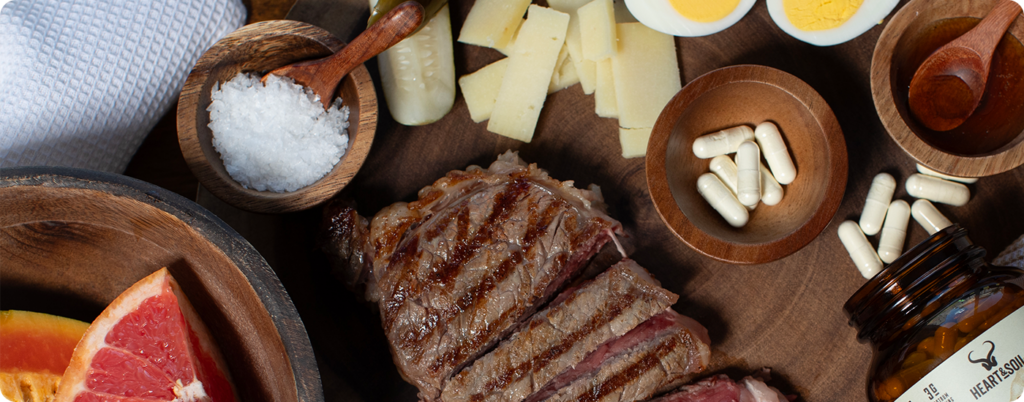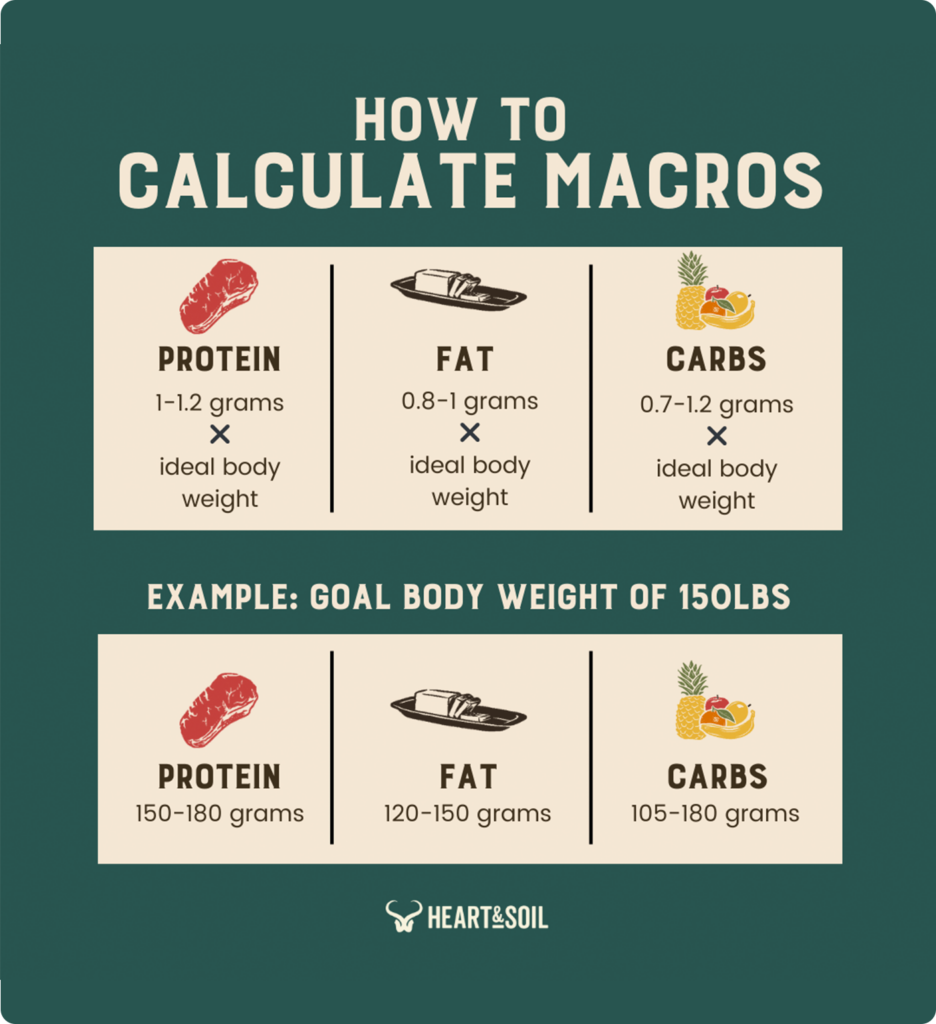PLEASE NOTE: The information in this blog is for educational purposes only. It is not a substitute for professional medical advice. Consult your healthcare provider if you’re seeking medical advice, diagnoses, or treatment.
If you’re exploring an animal-based diet as part of your exercise regimen, you’re in the right place! Nutrition is an essential yet often overlooked part of athletic performance.
The answer to the question, “What should I eat for optimal performance?” has fluctuated over the years, following Western medical thinking (read as “calorie intake is all that matters”) up until fairly recently.
Today it has split into many camps, each asserting its approach is the best. It takes work to sort through all that information and choose the right path for you.
If you’re satisfied with your quality of life, athletic performance, and nutrition, keep going down that path. If, like many people, you’re experiencing symptoms of poor health, such as injury, fatigue, irritability, and stalling out on your fitness goals — then it may be time to explore how an animal-based lifestyle can help you break through.
An animal-based diet is a tool for NFL players and various high-end athletes. The animal-based lifestyle can also help you optimize your athletic performance even if you’re not a professional athlete.
Let’s dive into the details of this diet and lifestyle!
The Foundations of Animal-Based Living for Athletic Performance

The following list outlines the core principles of an animal-based lifestyle with some modifications for anyone optimizing for athletic performance.
1. Eliminate Seed Oils
Processed vegetable oils (corn, safflower, sunflower, soybean, cottonseed, canola, peanut, grapeseed, sesame, etc.) contain high levels of linoleic acid (omega-6 PUFA). These oils can contribute to inflammation and chronic disease.
We suggest replacing seed oils with tallow, ghee, butter, and other nourishing saturated fats.
This also means reading ingredient labels and avoiding most packaged foods. Industrial food production relies on seed oils because they’re cheap and abundant. When dining out, you can request the kitchen to cook your food in butter or simply without vegetable oil.
It’s also important to source your olive oil and avocado oils from reputable sources. With no exaggeration, 79% of the brands at the grocery store cut their products with soybean, canola, or some other seed oil (1).
Additionally, do your best to avoid fatty pork, chicken, duck, turkey, or other monogastric animals primarily fed corn and soy diets. Like humans, these animals will store excess linoleic acid in their fat cells, which is easily absorbed when eaten.
2. Prioritize Well-Raised Meat and Organs
Incorporating unprocessed meats into your diet can be a delightful way to get the macro (protein, fat) and micro (vitamins, minerals, peptides) nutrients your body needs.
We suggest you focus on meat and organs from grass-finished ruminant animals such as cattle, buffalo, goat, lamb, and deer.
If you consume poultry, eggs, or pork, stick with free-range or pasture-raised options. Industrial farms rely on cheap corn and soy-based feeds to raise and fatten their animals. Even “organically raised” animals may be fed organic corn and soy — resulting in a buildup of linoleic acid in their fat tissues.
Organs are a staple of the animal-based diet. These are the most nourishing foods on the planet, containing vitamins, minerals, growth factors, and peptides to fuel and repair your body.
Organs like liver, heart, and bone marrow can be found at many grocery stores (often in the frozen section), local farms, or in freeze-dried form.
3. Include Eggs & Dairy
We suggest including eggs if you can tolerate them. They’re a great source of nutrients like vitamin B12, choline, iron, and iodine. Eggs are a helpful food if you’re looking to boost your protein or fat intake.
Dairy is an excellent source of protein, fat, and calcium. If you tolerate dairy, you can enjoy raw cheese, raw milk, plain yogurt, or dairy from A2 sources in your diet.
When people react negatively to milk products, the offending component is often a protein called ‘casein’ (2).
There are two varieties of milk out there, A1 and A2, which refers to the type of casein protein found in the milk. A1 casein is found in most cows’ milk in the United States, and the A2 variant occurs in the milk of a small percentage of US cows and other ruminants like buffalo, goats, and sheep.
Generally speaking, the less common A2 milk is easier to digest and less problematic than the more common A1 milk, so we always encourage anyone who feels that they are dairy-sensitive to give grass-fed A2 milk a try (3).
Not only does raw milk provide fat- and water-soluble vitamins in their most bioavailable forms, but it also provides enzymes and bacteria that improve digestion (for most people), enabling you to get the most out of your food which translates to improved health overall and a healthy gut lining.
If you’re interested, check out this site to find raw dairy in your area!
4. Add in Performance Carbohydrates

Fruit is another excellent addition for athletes, providing healthy carbs and variety to your diet.
Buy organic, in-season options whenever possible. Dates, bananas, citrus, berries, and unsweetened fruit (such as squash) are all excellent choices. You can also check out our infographic on the least toxic fruit and vegetable options.
Many with more active lifestyles also benefit from organic white rice and sweet potatoes.
Carbohydrates are essential for maximizing your athletic performance and recovery. Depending on activity frequency, intensity, and type of activity, you may need more than 150-200g of carbohydrates per day from low-toxicity plant foods.
5. Find Your Ideal Macronutrient Intake
Always start with protein, and feel free to adjust your ratios down or up as needed.
Carbohydrate requirements will likely be much higher for anyone who is highly active. Finding that sweet spot takes time and experimentation within the suggested range — be gracious with yourself as you explore what works for you.
These ratios can be a helpful starting point.

The timing of these different nutrients can be very important for sleep, exercise recovery, and hormone optimization (4).
Carbohydrate and protein-rich meals later in the day may improve sleep quality. Eating your final meal at least three hours before bed ensures optimal sleep quality, which is crucial for recovery!
Regardless of when you exercise, we suggest consuming most of your protein earlier in the day. Doing so can assist with the maintenance or growth of muscle.
MyFitnessPal and Cronometer are a couple of great tools out there for getting these calculations reigned in and tracking your intake.
6. Supplementation
Whole animal foods provide unique nutrients in bioavailable forms and ideal ratios for optimizing human health. There’s so much we still don’t know about nutrition, but it is clear that nutrients from whole foods are more beneficial than highly processed sources.
This is why we don’t encourage the use of most protein powders.
Protein powders may contain heavy metals and fillers, which may contribute to immune-related issues. To see which protein powders have the highest risk of harmful substances, check out the Clean Label Project’s work on the cleanest protein powders.
If a protein powder is truly the only way to meet your intake goal, we suggest the options from Mt. Capra. Their goat milk-based powders are free of flavors, colors, and chemicals, and they’re produced using gentle dehydration techniques.
Another common supplement is creatine. Although creatine is crucial for optimal performance and cognition, you can consume plenty on a properly constructed nose-to-tail, animal-based diet! Eating enough protein from ruminant animal meat will ensure adequate amounts of vitamins, minerals, and amino acids like creatine.
Depending on your size, you ideally want 3-7g of creatine daily 1.1 lbs of muscle meat = 2.5g of creatine and 2.2 lbs of muscle meat = 5g of creatine (5).
We’ll discuss our supplements in more detail below.
7. Exercise

There is an endless variety to choose from regarding exercise routines.
If you’re a professional athlete, you almost certainly have an established routine that fits your goals. On the other hand, if you’re just getting your feet wet in the fitness pool, these suggestions will give you a good starting place.
- Movement
Outside of competition preparation for bodybuilding or physical therapy, isolation movements (bicep curls, leg extensions, and other single-joint movements) do not have nearly as many health benefits as compound, multi-joint movements.
The “major muscle groups” are all recruited between three types of movements: push, pull, and legs.
- “Push” movements = chest, delts, bis, tris, core, and include movements like dips, bench, flies, and presses.
- “Pull” movements = back, lats, core, rear delts, traps, and include movements like pull-ups, wide-grip pull-downs, and rows.
- “Leg” movements = core, quads, glutes, hamstrings, and calves and include squatting motions, sprints, plyometrics, lunges, and deadlifts.
This episode of the Huberman Lab Podcast contains a wealth of evidence-based suggestions for optimizing your exercise movements.
- Frequency
Next, maximizing hypertrophy through training requires a certain frequency of specific movements. It is generally agreed that hitting the three major muscle groups/movements 2-3x per week is optimal.
The sweet spot is in the neighborhood of 4-6 sets of 8-20 reps with 90-120 seconds of rest between each set. This could be 2-3 full body workouts per week or six days of rotating between the three movements to hit each muscle group 2x per week.
- Training Tips
Consider picking one or two movements from each muscle group or movement that is a compound, multi-joint movement. Make sure to choose the ones you are interested in!
Consider starting with four sets of eight reps for each movement 2-3x a week. Then, over time, you might work up to six sets of 12 reps. To ensure your hypertrophy and performance do not plateau, you might incrementally increase weight as you can.
Here are a few fitness programs our customers have enjoyed and reported excellent results from (no affiliation with Heart & Soil).
Whatever exercise protocol you choose, include warm-ups and cool-downs. 5-10 minutes is plenty of time to prime your muscle groups rather than getting you ready to sweat.
Elastic bands, bodyweight, calisthenics, and lightweight movements are all excellent for warm-ups and cool-downs, even if you’re using them for resistance training during the main workout.
8. Prioritize Sleep
Sleep cannot be overlooked for athletes and those looking to maximize athletic output, given its sway over cognition and athletic performance (6, 7).
To be restorative, sleep must have adequate duration and quality (8). For most adults, this is around 7-9 hours per night. The demands of an athlete’s lifestyle may lead to increased sleep requirements.
Simple diet and lifestyle habits can dramatically improve sleep quality. We commonly suggest limiting electronic devices, winding down with breath work or meditation, keeping your room dark and cool, and avoiding caffeine or alcohol before bed.
Can Athletes Take Heart & Soil Supplements?
The short answer is yes! However, some athletes should avoid certain products.
Each Heart & Soil product is tested by Informed Sport, a globally recognized banned substance testing and certification program that tests every single product batch before it is released.
When a supplement user sees the Informed Sport mark on a product, they can have confidence that it has undergone the most stringent testing in their ISO-accredited laboratory (more on LGC labs here).
Once the certification has been awarded, we continue to test every batch as well as regularly test blind samples to safeguard against chemicals and more than 200 banned substances included on lists from WADA (World Anti-doping Association), NFL, NHL, MLS, MLB, NBA, PGA/LPGA, NCAA, and WTA.
This process has been developed with LGCs more than 55 years of expertise in anti-doping in sports to provide supplements and users absolute confidence in the program.
All of our products (minus Whole Package, due to the presence of testosterone in bull testicles) passed Informed Sports standards.
Another product of ours, Grass-Fed Colostrum, did not receive the certification (even though it met the standards) given that it contains colostrum which the NCAA bans.
The following resources will benefit athletes or military personnel looking for information about the safety of our supplements regarding banned substances (9,10,11,12).
You can also email the team at Heart & Soil to see the updated testing from Informed Sport.
Reach New Heights With the Animal-Based Lifestyle
The animal-based diet is an incredible tool for NFL athletes and other individuals looking to maximize athletic performance.
There’s no one-size-fits-all approach, but the core principles of eliminating seed oils, prioritizing sleep, and including well-raised animal foods can help you perform at a high level!
Subscribe to future articles like this: